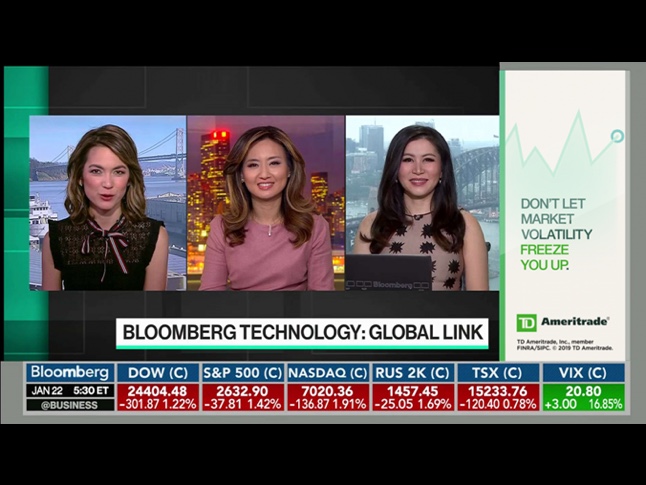Bloomberg Media has developed technology to connect its TV and digital ad inventory
One of the most valuable pieces of technology in ad-supported media today is the tech that can connect media companies’ linear TV and digital advertising businesses. That technology doesn’t fully exist yet, but it’s beginning to take form.
Bloomberg Media has developed a technology called Bloomberg Interlink that, as the name suggests, will enable the media company to link its ad inventory across its linear TV network and digital properties. The company will initially use the technology to update the banner ads that appear on screen during its TV shows, but eventually, Bloomberg Interlink will enable Bloomberg Media to treat its TV commercial breaks and digital pre-roll and mid-roll placements as a single inventory pool.
Getting to that point will require time and testing given the revenue that’s at stake. “The biggest challenge that we’re thinking about is how does one try to create more dynamic inventory within those [linear commercial] pods without disrupting the TV marketplace that does quite well for us,” said Derek Gatts, global head of advertising innovation, technology and operations at Bloomberg Media.
That’s why Bloomberg Media is starting somewhat small with Bloomberg Interlink. For now, Bloomberg Media is using the technology to apply its Trigr ad product — which tailors a banner ad’s content based on stock market conditions — to the banner ads that appear on screen during Bloomberg’s TV shows. “We needed a technology that would help us bridge that need for real-time insertion,” said Gatts.

Bloomberg Interlink serves as an intermediary between its broadcast transmission system and its digital ad server. The technology tracks the available inventory on Bloomberg Media’s TV network as defined by the broadcast transmission system. Then, it takes the ads that the digital ad server is looking to place and passes them to the broadcast transmission system to air on TV.
Bloomberg hopes to use Bloomberg Interlink to make the Trigr-powered banner ads available on its TV networks outside of the U.S. by the end of this year, said Gatts. “Then from there, we would start to look at potentially capitalizing on Interlink to use on other types of formats that we offer on TV,” he said.
Bloomberg Media is not the only media company trying to build a bridge between its linear TV and digital ad inventory. Comcast’s NBCUniversal and its ad tech sibling FreeWheel are working on that as well. And others such as AT&T and Google are likely to follow suit. The expectation that many companies will develop this kind of technology and the value of having that technology helps to explain why Bloomberg Media opted to file a patent for Bloomberg Interlink, protecting the technology that’s important in protecting the future of its advertising business.
“We felt like if this is where the marketplace is going and we are uniquely poised with the engineering capabilities as well as being a multi-platform global company, we should actually put a patent around this to make sure we protect this technology,” said Gatts.
By owning technology that’s able to connect TV and digital ad inventory, Bloomberg could opt to license the technology to other media companies and position itself as an ad tech alternative to FreeWheel and Google, which have established themselves as the foremost ad tech companies working with TV networks to bridge the linear-digital divide. However, that may be a ways off: “I wouldn’t say we are thinking about that yet,” said Gatts.
More in Future of TV

‘A year of loose ends’: Digiday editors share top takeaways from 2025
This year was filled with major developments – from Netflix’s planned WBD deal to Omnicom’s acquisition of IPG to Google’s ultimately cookie reversal – and Digiday editors Sara Jerde and Seb Joseph help to recap the year that was (and wasn’t).

Future of TV Briefing: How the future of TV shaped up in 2025
This week’s Future of TV Briefing looks back at the top topics and trends that overtook the TV, streaming and digital video industries in 2025.

Programmatic agency execs speak out on CTV transparency
At the recent Digiday Programmatic Marketing Summit, agency executives spoke out — on stage and in behind-closed-door town hall sessions — on how they see transparency in CTV.





